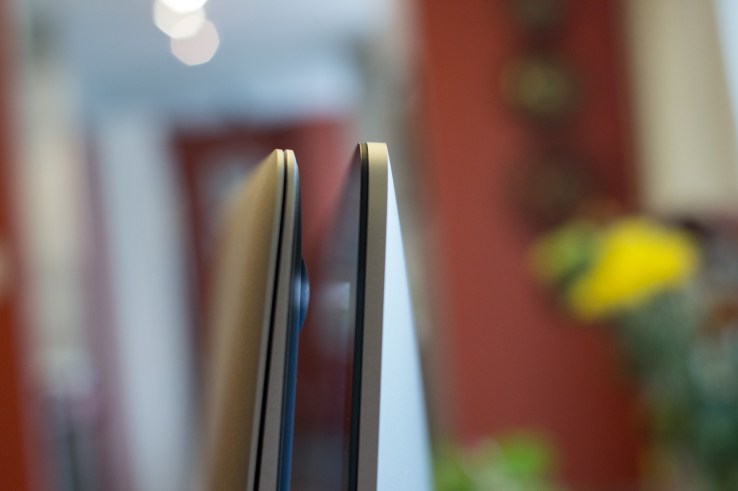
It’s a standard Apple play to shave a few atoms off the waists of its gadgets come refresh time — allowing the company’s marketing department to crow about thinner flagships that also pack more power and boast better screens, or both.
If rumors about a next generation model of the MacBook Air are to be believed, for instance, Apple is planning to slice the laptop’s thickness roughly in half, while boosting its display size from 11 inches to 12, mostly by reducing the bezel, so its overall footprint hardly grows at all.
But this party trick of packing more into less requires something to give. Likely space for certain physical ports, in the case of the rumored skeletal MacBook Air. While, for current iPhone flagships, the 6.9mm thick (thin) iPhone 6 and the 7.1mm iPhone 6 Plus, a degree of form-factor integrity has clearly been lost in the quest to achieve size 0 smartphones — hence the bendgate saga.
iPhones that weren’t quite so thin would probably have stood up a little more robustly when people stuck them in their back pockets and sat on them for hours. But those aren’t the iPhones Apple made.
Still bendgate is small beer compared to the most complained about compromise of slimmer gadgets: battery life. Limiting physical size negatively constrains battery capacity, since the space for housing cells is probably shrinking too. It’s certainly not being allowed to balloon, year on year.
Even though Apple typically optimizes hardware and software to offer the same battery life — or sometimes a slight improvement — in refreshed devices it does not offer headline-grabbing, orders of magnitude improvements. Such leaps are reserved for its new chipset or a better display or the aforementioned thinner form factor.
Partly this is because improvements to battery technology have been more incremental than other tech developments. But it’s also a measure of the constraints Apple’s external design demands place on the innards of i-Devices. With increasingly slender gadgets, something has to give — and that something is substantial improvements in battery life.
If Apple was content with a philosophy of ‘thin enough’ it could allow a little more space inside its gadgets, year on year, to make room for bigger batteries — to address what remains a very mainstream gripe: devices that give out before their users do.
Getting a day’s mixed use from a smartphone remains the expected standard. More careful use can eke out a little more life. Heavier use will require you to be packing a spare battery or charger. So the irony is that the thinnest, most apparently aspirational gadgets end up being tethered to a wall or attached to an auxiliary battery pack to keep them juiced up.
Anyone who grew up in an earlier technology era, when home computers typically demanded a substantial chunk of your desk space, and ‘portability’ meant lugging around a dead-weight with a handle attached, understands Apple’s imperative to slim down the kit.
But there comes a point where size, surely, no longer matters. Where a phone or a laptop or a computer is now thin enough for even the most fashion conscious gadget owner. And yet still Apple thins.
Its consistency here makes slimming a clear strategy. But what’s the logic of Apple’s well-crafted thinness?
Read More
Comments
Post a Comment